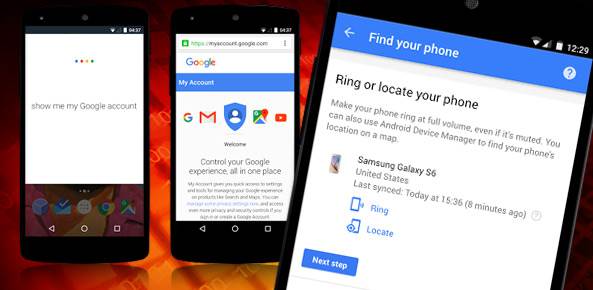One year after launching its My Account hub for privacy and security management, Google yesterday announced several new capabilities for the online tool.
A new “find-your-phone” feature is designed to make it easier for people to locate and secure lost or stolen smartphones, whether they’re Android or iOS devices. Apple has long offered that capability for iPhone owners, and Google last year made it possible for Android device owners to look for their phones through a desktop search.
My Account brings controls and tools for managing Google services together in one place, providing access to connected apps and sites, Google Drive storage, device activity and other user data. Google said 1 billion people have used the tool since the hub was unveiled last year.
New Voice-Controlled Capabilities
“When you entrust your data to Google, you should expect powerful security and privacy controls,” product manager for account controls and settings Guemmy Kim wrote yesterday in a blog post. “These features are just the latest in our ongoing efforts to protect you and your personal information.”
The new find-your-phone feature lets users find lost or stolen devices in a few steps, Kim added. It also enables users to lock or call devices, remotely secure their Google account information and even leave callback phone numbers on the devices’ screens.
Another new feature in the works will allow users to access the find-your-phone feature simply by searching Google with the term, “I lost my phone,” Kim said.
Yesterday, Google also launched a My Account feature that allows users to quickly access the hub with the spoken command, “OK, Google, show me my Google account.” Currently available in English, the voice search capability will be rolled out in other languages soon, Kim said.
Limiting Data Collection, Storage
Another My Account feature expected to launch soon will provide users with a Google search shortcut to their personal hubs. Once that’s live, users searching their own names will see a “My Account” link at the top of their search results.
In addition to providing access to management tools for Google services, the My Account hub also offers guides to help users check their privacy and security settings. Another link on the site takes users to online details about what kind of data Google collects about its users and what it does what that data.
Although Google gathers a wide range of data about what users search for, which sites they visit, which ads they click, which contacts and events they have on their Calendar apps and more, users can deactivate some of those collection points. For example, they can turn off their Web and app activity features, which Google said it uses to return faster and more relevant search results, or switch off tracking for their location histories, which Google uses to power results for Maps and other services.
Even as tech giants like Google continue to gather and store huge volumes of user data, some new technology startups are shifting gears to reduce the amount of information they keep about users. As recently reported by the Washington Post, some firms in Silicon Valley are looking for ways to collect, use and store less data to avoid potential showdowns with government agencies, such as the U.S. Department of Justice, that want greater access to information on people’s smartphones and other devices.







